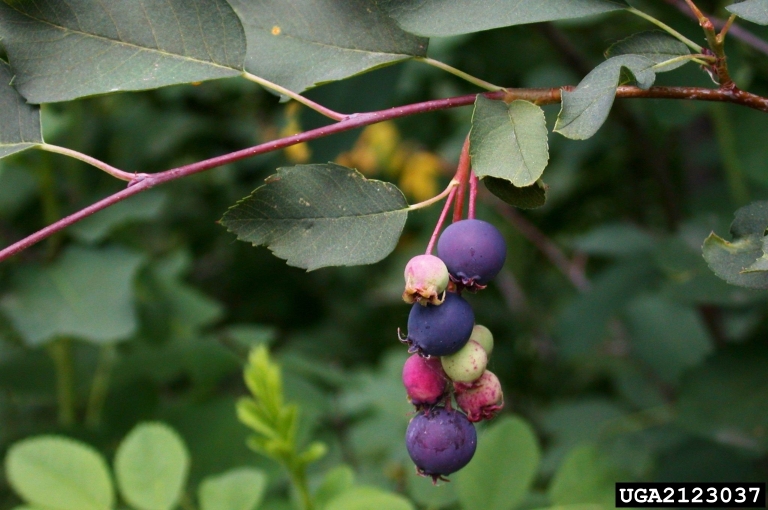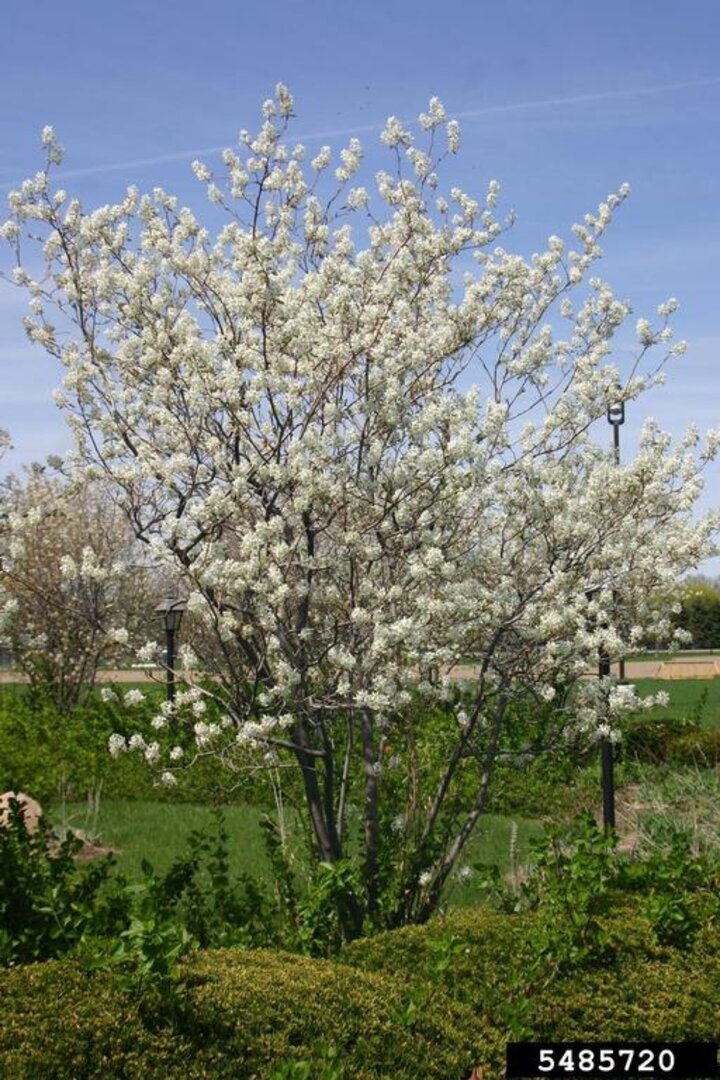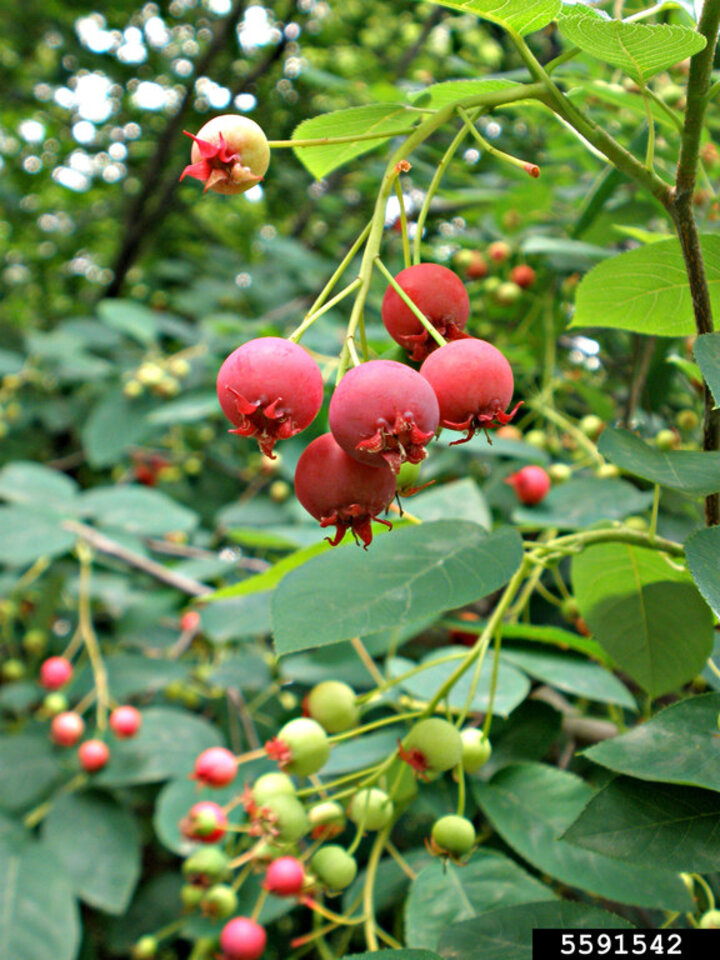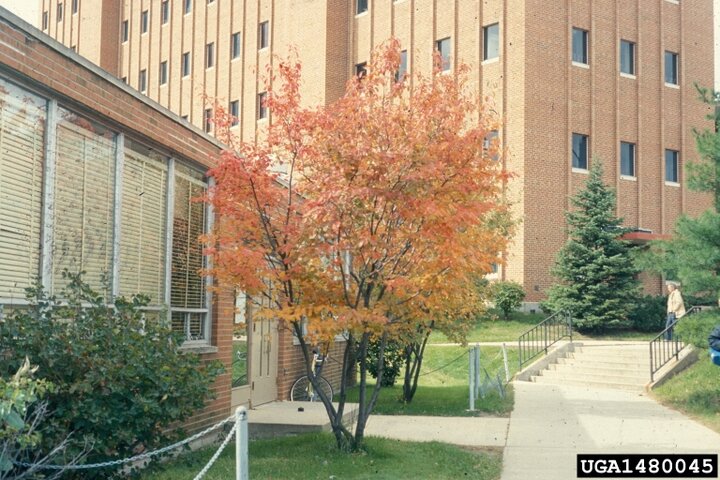
Serviceberry, Amelanchier alnifolia, fruits ready to harvest. Mary Ellen (Mel) Harte, Bugwood.org
Whether for fruit production, habitat or beauty, serviceberry is an excellent addition to any landscape. You might know these plants by other names such as Juneberry, named for the month when fruits ripen, sarviceberry, and shadbush referring to the plants bloom time "when the shad (river herring) run".
There are about twenty plant species within the serviceberry genus, Amelanchier, native to temperate regions in North America, Europe and China. The greatest variety within this genus is found in North America, where at least one species is native to every state within the United States except Hawaii. For example, Saskatoon serviceberry is native to the Great Plains from Manitoba and Saskatchewan to Nebraska. Allegheny serviceberry is native from Newfoundland to Georgia and Alabama, west to Michigan and Kansas.

As a small ornamental tree, it's hard to beat Downy serviceberry, Amelanchier arborea. It has alternate, oval-shaped leaves that are medium to dark green, and when young may be covered with small hairs on the undersides. It forms a large, multi-stemmed shrub or small tree and when unpruned reaches 15-25 feet in height. Downy serviceberry is hardy to zone 4 and should be grown in well-drained soil with full or partial sun. It blends in well at the edges of wooded areas, along ponds or stream banks, or in shrub borders.

The cultivars below grow well in Nebraska landscapes and are crosses between Downy and Allegheny serviceberry, A. laevis.
- 'Autumn Brilliance' – often grown as a multi-trunked tree or large shrub, height 15-20', brilliant red fall color
- 'Robin Hill' – upright oval form, height 20-30', yellow to red fall color
- 'Rainbow Pillar' – tight upright form, height 25', mottled yellow, orange and red fall color
- 'Standing Ovation' – upright oval form, height 10-20', orange-red fall color

Fruits ripen in June or July. Prairie Indians mixed serviceberry fruits with buffalo meat and fat to make pemmican, their main winter food.
One good fruiting cultivar widely available locally is 'Regent'. It's a compact shrub, only 4-6' tall by 4-8' wide, with extra sweet fruit. It has nice fall color and plants don't sucker much from the base so they stay in place in your landscape.
Adding serviceberries to your landscape will provide spring flowers, fruits, and great fall color. And you'll create habitat for summer songbirds. Consider adding a serviceberry to your landscape this fall!
For More Information
Serviceberries in the Garden, Utah State University Extension
Serviceberry, University of Minnesota Extension
Images
- Serviceberry tree. Denise Ellsworth, The Ohio State University, Bugwood.org
- Serviceberry fruits still immature. Ansel Oommen, Bugwood.org
- Canadian serviceberry, A. canadensis, fall color. Richard Webb, Bugwood.org